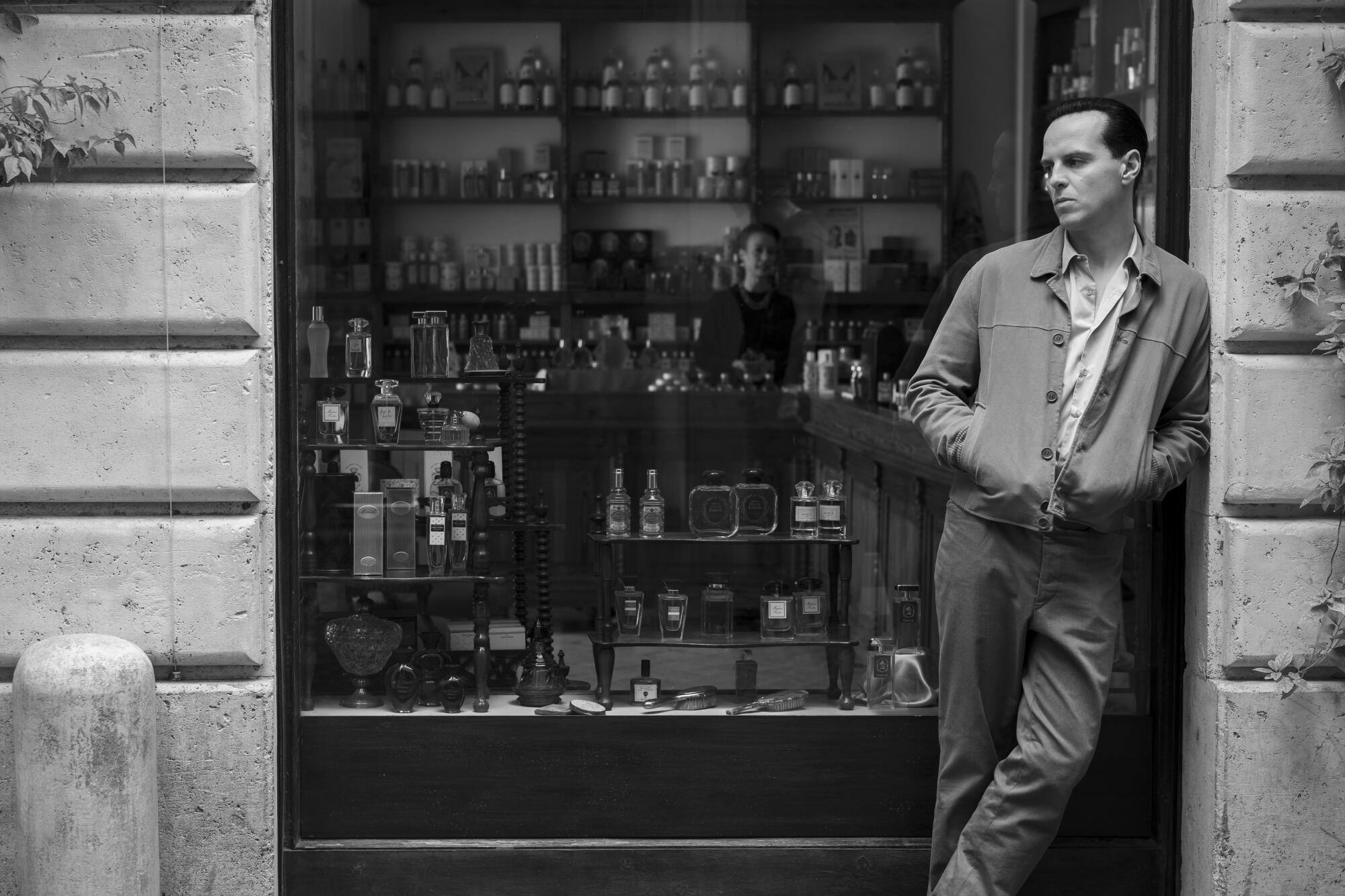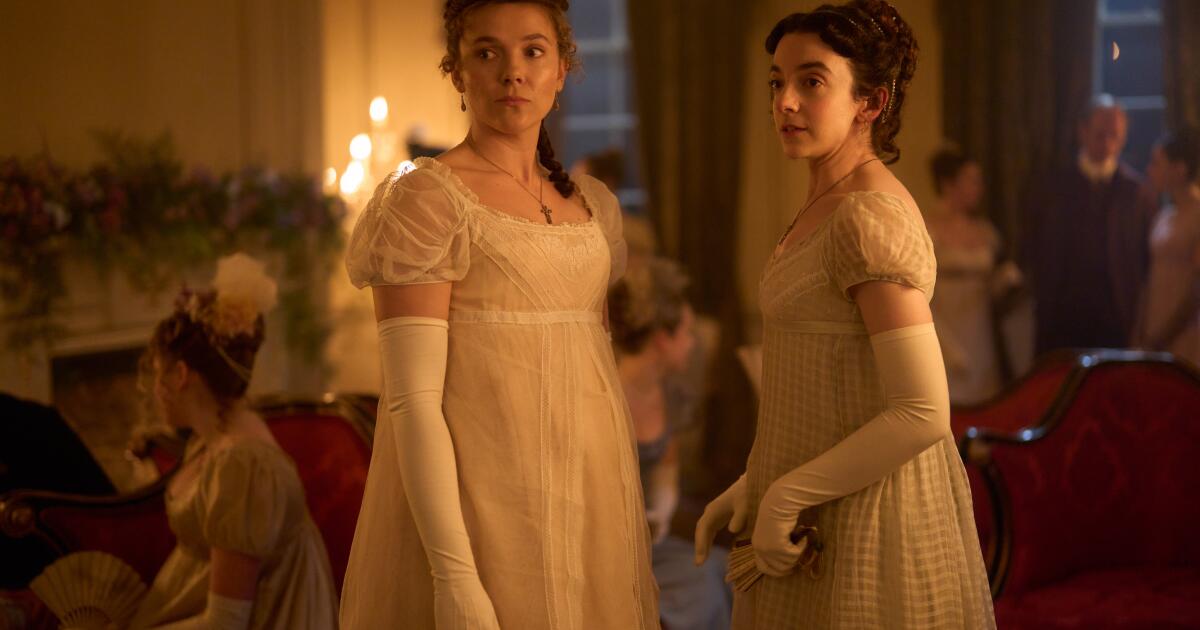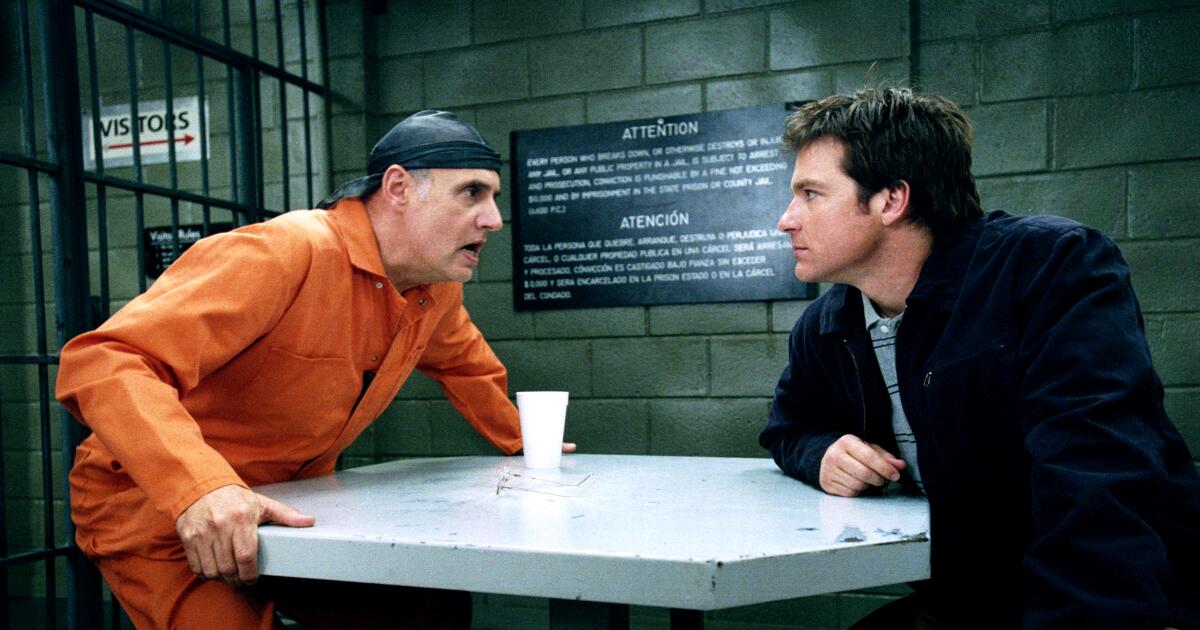Steven Zaillian's choice about what he chooses to write about comes down to two simple questions, as he explains: “Is it interesting to me? Do I think I could do it well? And in the case of Netflix's “Ripley,” its eight-part adaptation of Patricia Highsmith's 1955 novel “The Talented Mr. Ripley,” the answer to both was yes. But Zaillian, who often writes meaty stories about men in morally gray areas, including “Gangs of New York,” “American Gangster,” “Awakenings” and the 1994 Oscar-winning “Schindler's List,” didn't. . Stop with the exclusive screenwriter credit for “Ripley.” He is its director and also executive producer. Zaillian spoke to The Envelope via Zoom about taking on the equally gray Tom Ripley in pure black and white… and a touch of red.
What attracted you to Patricia Highsmith's books in the first place?
I gravitate toward things that have a kind of timelessness to them. Even if “Ripley” takes place in 1955 or 1960 or whatever, it's a timeless story.
Timeless, although the details may not work in today's world.
At one point, a company I was talking to said, “Yeah, we'd love to do it while you're currently doing it.” I said, “I can't. This story won't work with cell phones and all that.” That is the reason to keep it in the period. It's a great period: before the Beatles, before Italy was overrun with tourists. But we will always have these types of people in our lives.
Antonio MinghellaThe sunny 1999 film “The Talented Mr. Ripley” is almost a diametrically opposite version of what you're doing on Netflix. Was that intentional?
It wasn't a conscious effort to do that. It was a conscious effort to capture what I imagined it would be like when I first read the book. I just couldn't see this story in color, and I didn't feel like it was a fashion show or a happy, like you said, postcard look. In the book, [Highsmith] He spends a good 50 pages describing his life in New York. It was important for me to identify this guy who is really just a petty criminal, and I had enough time to do it.
Dakota Fanning and Andrew Scott star in “Ripley.”
(Philippe Antonello/Netflix)
It's almost a shame to spend so much time in Italy and not see it in color.
Let's go back to neorealist films: they are in black and white. “La Dolce Vita” is black and white and quite Italian. Those were the looks of Italy I had in mind.
So, have you thought about shooting…?
Movie? No. I'm not sure nowadays what the point is of doing that when you can shoot digitally and have that look like film. But we were careful when filming; There are no color monitors on set. We shoot in color but we never watch it in color.
Although there is that moment where the cat walks in blood and leaves red marks. Why highlight that?
You're in the editing room for a year and you're playing with things. One day I said, “You know what? “Maybe it would be fun if the cat’s paws were the only color shot.” There is no hidden meaning. I found it funny.
You directed, wrote and executive produced, which you also did on 2016's “The Night of.” What's so beneficial about having your hands in so many pies?
The biggest benefit of directing something I've written is that, whether it turns out well or not, it's what I intended. I don't write any differently. I'm one of those people who can't write it unless I can see it in my mind. So I already saw the movie when I finished writing the script. I'm lucky to be able to do both.

“Con artists are interesting characters and create good drama. But Tom is so much more than that,” writer-director Steven Zaillian says of Ripley, played by Andrew Scott.
(Stefano Cristiano Montesi/Netflix)
What made Andrew Scott your Ripley?
I'd only seen him in a few things: “Sherlock,” “Fleabag,” and a movie called “Locke,” where he was just a voice on the phone. He created an entire character just with his voice. He was doing something where we were going to be with someone who is alone a lot. Somehow he has to draw the audience in and make them experience things the way he experiences them.
But he is 47 years old; The character in Highsmith's books is about 20 years old. Scott won't be playing when he's in his twenties, right?
When I chose him, he was 41 years old. I felt like all the characters should be about the same age (Dickie, Marge and Tom) and around 35 felt right. If you're 35 and a trust fund kid, I can see that your parents care a lot about your future. With Tom, I felt like he's a desperate con man, so I needed more of a story behind him than a 25-year-old would have.
And did you have other actors in mind?
He was the first option. One and only.
You mentioned including a pop of color for fun. was including Juan Malkovich, Who played Ripley in 2003's “Ripley's Game,” also for fun?
He plays a character that doesn't even appear in “The Talented Mr. Ripley,” and I found a use for that character in the story and wanted to, if we ever do more, establish this character in the first one. I said that to John, like, “Can you see how this would be fun and cool?” And he said, “Let's do it.” He was just lovely.
So, will you be doing another of Highsmith's Ripley novels?
Yeah [executives] If you asked me that now, the answer would be no. Will there be enough time to recover and think about it? Yes. And if I did, [Malkovich] I would definitely be in it. I want it in him.
What makes Tom Ripley so endlessly fascinating?
The con artists are interesting characters and create good drama. But Tom is much more than that. The totality of who he is makes him such an enduring character. He is such a complex and distinctive character. He's one of the few characters who does bad things that we want to see anyway.












